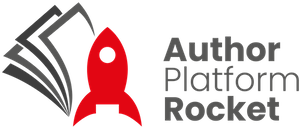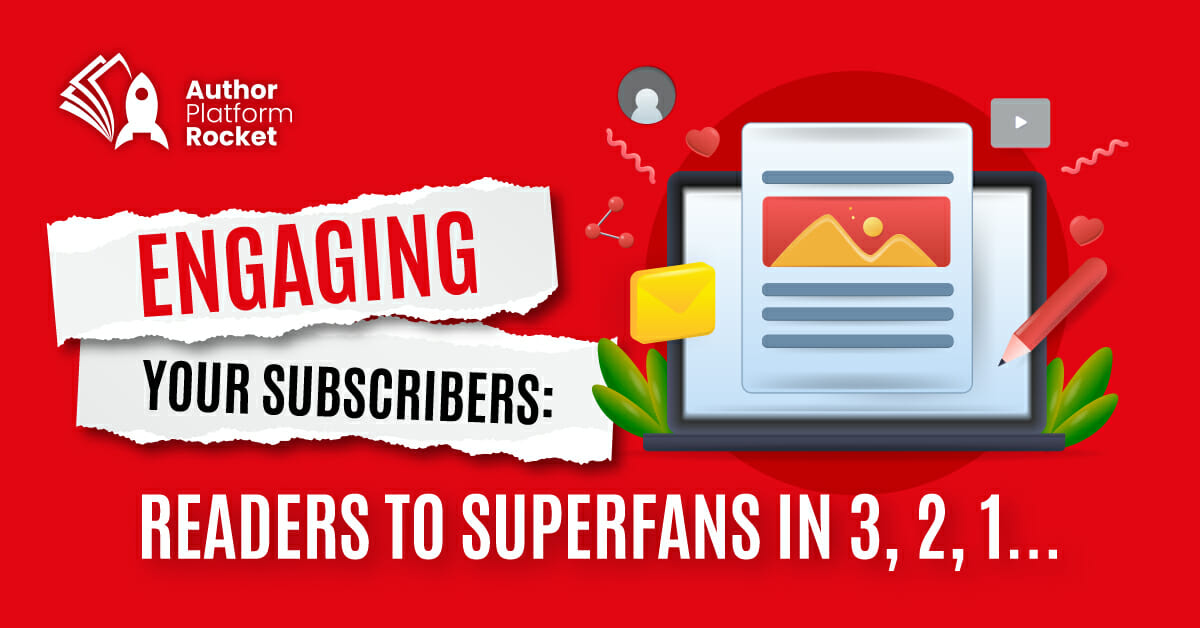Imagine this: You know the secret to kickstarting a successful author career is to grow & nurture a thriving email list. So you enter an email list building promotion and when it ends you receive over 5,000 new subscribers. Impressive, right? Maybe even overwhelming. You upload those 5,000+ new subscribers to your author email list and … then what? What do you do with these people? You know you need to be engaging your subscribers, but what do you actually say to them? Are they your superfans?
Hint: No, they’re not. So what is the point, you wonder while scratching your head.
The above scenario is a real situation 66 fantasy authors found themselves in after entering one of our Mega Fantasy giveaways. And by the way, we’re not exaggerating the number of subscribers. Thanks to our sponsors, marketing team, and all the authors working together to promote the giveaway, we really did get over 5,000 new subscribers in one month with just a single, targeted giveaway.
Read more about how to get subscribers and build your author email list fast.
Click Here
Just like when we first opened our doors in 2015 and started delivering anywhere from 500 – 15,000 subscribers per promotion, our inbox was immediately flooded with messages from the participating authors saying “Wow, great job! This is AMAZING… but what do we do with them now?!”
To which we replied, “Hey, don’t forget to send your new subscribers an email message!”. We have even set up an entire training programs for this. That’s why today we are going to make this VERY simple for you.
Seems obvious to us that you would want to say something to those 5,000+ people who just joined your newsletter, right? But to our honest surprise, many authors wrote back saying, “Oh, good idea … what should I say to them?”
After a bit of shock, we immediately realized that our services mean NOTHING if authors don’t know how to utilize the subscribers we just gave them.
Getting subscribers is just the first step. Imagine if you owned a brick and mortar bookstore. There are 5,000 people lined up in front of the door, each one excited to discover something new, but you forgot to unlock the door!
Now you have to welcome them inside and tell them about your books! You can’t expect sales if readers are just standing on the curb. They’re AT your store, yes. But they’re not IN your store. They’re not interacting or buying because YOU must interact with them FIRST.
Many authors are intimidated by this step. So many of us chose the written word as our medium because we’re introverts. We’re not good at small talk. We’re even worse at selling ourselves. We don’t want to come across as too pushy or gimmicky, so we don’t even try. As a result those 5,000+ potential readers fall through our fingers. Which is a real shame.
Don’t let the fear of success get in the way of your dreams! Stop leaving money on the table. Even better, stop GUESSING what to say to your subscribers. What if I told you that engaging with your subscribers is EASY, PAINLESS, QUICK and AUTOMATED? You just need to know a few industry secrets that, once you set them up, will run forever in the background. What if I told you the methods below will separate the wheat from the chaff – the freebie seekers from the genuine readers – and convert sales and superfans FOR YOU so you can keep using your valuable time to focus on writing? What if we told you EXACTLY what to do and say?
You’re in luck!
We LOVE helping authors blow up using stuff we provide them with. Especially when they’ve already done the work of participating in a giveaway. And especially when there is absolutely no reason NOT to get a buttload of sales and downloads. I mean, 5,000+ subscribers? Come on! We KNOW you can do it, because WE’VE done it for thousands of other authors in the past. Why not you?!
If you’re ready to learn exactly how to AUTOMATE engaging your subscribers in a way that sells books and coverts superfans for you, keep reading!
Engaging Your Subscribers Part 1: Streamline Your Newsletters With Automation
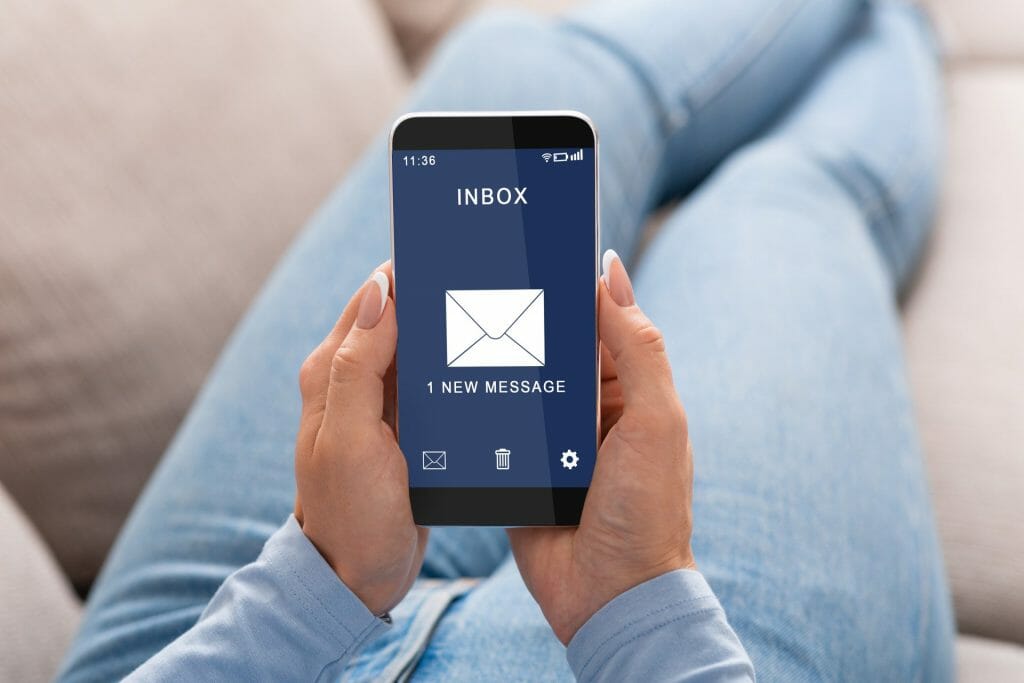
For the purpose of today’s topic, we’re going to focus on setting up an automation sequence that connects to a giveaway promotion. Let’s assume you’re giving away free copies of your Lead Magnet using a subscription-and-delivery based system such as Bookfunnel or StoryOrgin. (But keep in mind you’ll want to set up a separate sequence for each method of list-building that you use. Meaning one list for organic subscribers, a second list for subscribers that come through paid advertisements, and so on.)
We talked about Automation Emails, what they are, and why you need them in our previous post, 3 Vital Ways To Build Your Email List And Sell More Books. Automation emails (also called drip-campaigns and workflows) refer to a newsletter or sequence of newsletters that are set up to be automatically delivered to each new subscriber that joins your email list. This can include any subscribers you import too (such as from a promotional giveaway).
Since the goal of automation emails is to “set it and forget it”, automations are best utilized with content that is static (i.e. information that stays the same over long periods of time) so that you do not need to waste time updating them more than once or twice a year. Think of automation emails as a series of introduction newsletters that get sent to your new subscribers over the course of a few weeks.
In other words, you can set up an automation sequence to handle that initial engagement for you! Imagine having your own personal Wal-Mart greeter to welcome readers into your newsletter and introduce your books for you. That is the purpose of automations!
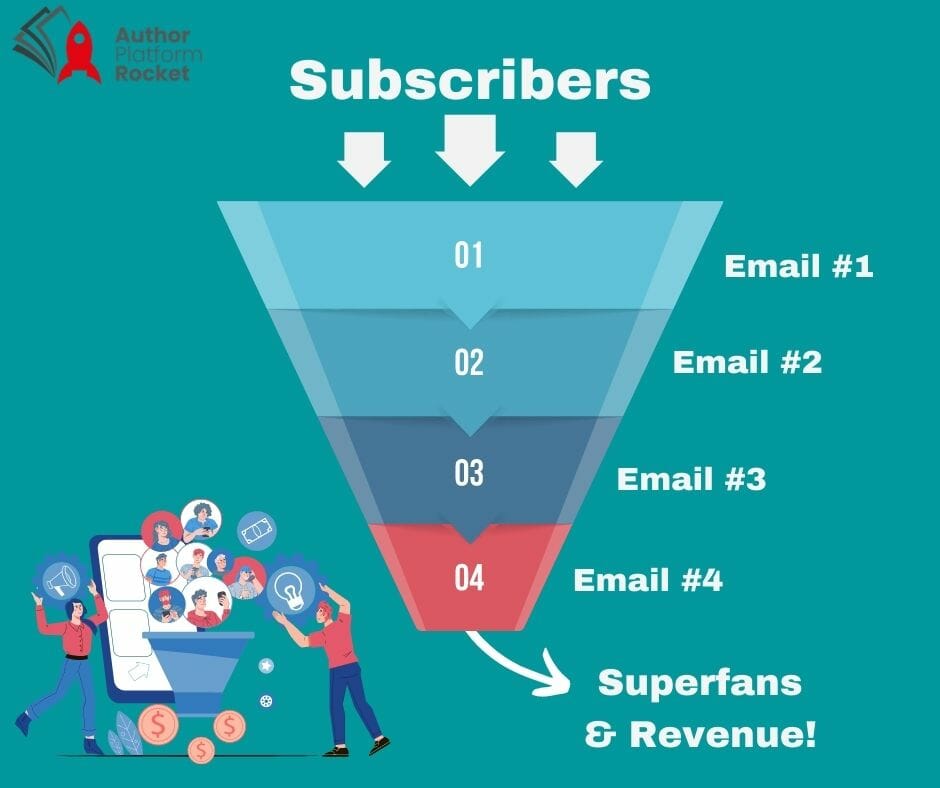
An example of an automation sequence can look like this:
- A person subscribes to your newsletter and immediately receives Welcome Email #1.
- Seven days later, they receive Welcome Email #2.
- One week after that (14 days from the day of subscribing) they receive Welcome Email #3.
- Seven days after that (21 days since the time of subscribing) they receive Welcome Email #4.
- And so on until they receive the final email in your automation sequence.
ALL of these emails are automatic. You don’t do a thing other than set it up ONCE. Done correctly, these automatic emails will not only introduce new readers to your book, but earn you SALES and befriend new readers, thus turning them into life-long superfans. All while you’re not even looking!
The exact number of emails you decide to include in your Welcome Sequence will depend on you, your backlist, and your marketing goals. For example, a brand new author with only one published book may not need more than two or three emails in their welcome sequence. Whereas a seasoned author with more than 20 published titles can get more creative with their automations. It’s entirely up to you. However, there are a few things you’ll want to get right that will dramatically change the effectiveness of your Welcome Sequence so that you get more sales sooner.
We touched on how to properly set up automation emails in our article 3 Vital Ways To Build Your Email List & Sell More Books. So now let’s dive deeper into what to actually say in these emails.
Engaging Your Subscribers Part 2: Design The Perfect Welcome Letter

For most new subscribers, the first email they receive from you will be their very first interaction with you, and as the saying goes: You only get one first impression! Most email services have a default generic Welcome email that is delivered to all new subscribers, but it’s bland and boring. Taking a little bit of time to customize a beautiful Welcome email with the right content will make all the difference between a welcome email that is ignored, and a welcome email that turns new subscribers into superfans! Ideally, you will have done this step before importing your new subscribers, but it’s never too late!
Give Your Newsletter a Glow-Up!
Before we drill down into the content, let’s take a moment to consider the design elements of your newsletter. Just like cover art for your book, you want your reader to be immediately impressed with the overall look and feel of your email the moment they scan the screen. If the layout is cluttered and difficult to follow, many readers will skim over your email and delete it without taking action. Do this too many times, and they’ll stop opening your emails altogether. That’s no good! Likewise, if there are NO graphics or anything to tie the email back to you (aka branding) the reader might not even realize it’s something they signed up for. It’s not memorable enough, which can cause readers to jump ship prematurely. Also not good!
If you already have a design template you’re happy with, great! But it never hurts to comb over your design elements with a critical eye and troubleshoot areas that may be lacking. It’s such an overlooked yet vital piece of the puzzle. Especially when you think about how visual digital media is today. Again, you want to impress every potential reader that comes your way. Don’t cut corners now.
Think of your writing style, your genre and tropes, your cover art, and any logos or author pictures. You’ll want all of that to be uniform in your newsletters as well. Most newsletter services let you craft a template so that you don’t have to start from scratch each time. Use this to your advantage. Add a header image that matches your website. Add your author photo, social media links, and a list of links to your backlist in the footer section of the template. All of these things can remain as static information.

Design Tips:
- Always use fonts and colors that are easy to read and match your genre.
- Whenever possible, use high quality professionally made graphics.
- Consider the layout and use of white space. Everything should look clean and flow well.
- Be concise. A great way to stop yourself from rambling and losing the reader is to have a single goal for each email and stick to it (We’ll talk more about this below).
Once you’ve got your design nailed down, be sure to save a copy as a template. That way you can duplicate it for each new newsletter with a simple click of a button.
With so many grenes, tropes, and writing styles out there, no two welcome emails will ever be exactly the same. Nor should they! Your author newsletter will be as unique as you are. You want your authentic personality to shine through because that is what readers will connect with most. However, there is an art to crafting a newsletter well. And there are specific elements that, if done right, can set the foundation for the kind of success that will last for the entirety of your career. That being said, we’re now going to walk you through crafting the perfect Welcome email.
Less Is More When Engaging Your Subscribers: A.K.A. They’ll Read A 600 Page Book, But Not A Two-Page Email.

There is one VITAL mindset piece that must be understood and utilized at all times for every single newsletter that you write from here on out. That mindset is this: One Topic Per Email. You can also think of it as: One Call To Action Per Email.
We know how tempting it is to fill every email with as much information as possible. Why wouldn’t you tell your subscribers everything about you, your entire backlist, your new release, your work history, your credibility, your awards, your dog, your kids, what you ate for lunch… Yeah, no. You can probably see how that path quickly devolves. The more information you bombard your reader with, the more they get lost in the noise and the less chance there is of them actually doing what you want them to do, which is buy the book.
People’s attention spans are decreasing every day. Especially on the internet where there are literally a billion distractions every minute of every day. Having more than one call-to-action in a single email will split a reader’s attention. For instance, a reader might forget to buy your book while answering a poll or signing up for your ARC Team. Instead, give each of those goals (1. Buy the book, 2. Answer the poll, 3. Join the team) their own individual newsletters.
Furthermore, time is a valuable commodity. When a reader has to scroll down to scan a long email, they’re more likely to put off reading it in favor of checking off other emails in their inbox. They might mean to come back to it, but chances are slim that they do. Keep your emails short and concise. Get to the point quickly, and you’ll see more success.
Before writing an email, set aside some time to consider your goals for that email. What do you want to achieve with that specific newsletter? What action do you want the readers to take? Do you want them to click on a specific link? Fill out a specific form? Whatever it is, write it down. Then craft your newsletter around that specific call-to-action.
For the purposes of your first Welcome Email, the goal is get your new subscribers to download your Lead Magnet.
“But wait, I thought the goal was to introduce myself?”
It is, and we will. But what better way to get readers hooked on your writing then by getting them to actually read your lead magnet? You see, human beings are a forgetful bunch. We’ve got kids, day jobs, pets, bills, a social life, and a hundred other things on our priority list. Where does reading your lead magnet fall on that list? Probably not as high as you’d like.
In fact, we’ve seen it a million times: MOST subscribers just plain FORGET to download the lead magnet after they subscribe. Even though it’s free! And even though you made it as easy as humanly possible for them to do so. They just simply forget. Therefore, it’s not enough to jump in with an introduction under the pretense that they’ve already read a few pages, because in most cases they haven’t even added the book to their Kindle yet. Hence, we are going to craft our first Welcome Email in such a way as to remind them to download the damn thing. With that in mind, let’s walk through the elements of a good Welcome Email line by line.
Engaging Your Subscribers Part 3: Craft The Perfect Welcome Email
Sample Welcome Email:
Welcome! Thank you for signing up!
My name is ___, I’m the author of ____.
You are receiving this email because you signed up for the “Super Awesome Giveaway” hosted by “Super Awesome Promotion Team”.
I wanted to be sure you downloaded your FREE book, FALLING IN LOVE WITH DRAGONS.
Click the ‘Get My Free Book’ link below and start reading right away!
In my next email, you will learn ___.
Be sure to add authorname@emailaddress.com to your approved contacts so you don’t miss out!
By the way, who’s your favorite dragon character? Hit ‘reply’ and let me know!
Until Next Time,
Author Name
First Line: The Greeting
“Welcome! Thank you for signing up!”
The very first line may seem simple and obvious. Just say hello, right? Can’t go wrong there. However, there are a couple elements to keep in mind.
- High Excitement: Set the tone and get your reader amped right away. Your followers will match your energy. Meaning they’ll only ever be as excited as you are about your content, so start on a high note!
- Always thank them for signing up. This isn’t just about showing your gratitude. A lot of subscribers forget what they’ve signed up for. It happens all the time. A simple “Thank you for signing up” communicates to the reader that YES they opted-in and consented to receiving newsletters from you, and NO you’re not just some random spammer that stole their email address. (Note: This is especially important to follow your country’s CAN-SPAM laws.)
Second Line: Introduce Yourself
“My name is ___, I’m the author of ____.”
You DO NOT need your full author bio here. Let a bit of personality shine through, but don’t overdo it. One or two sentences is enough.
For the introverts who are reading this article, when in doubt use your writing voice. Write comedy? Be a little quippy here. Write sci-fi? Wave your nerd flag a bit. There’s no rush, take your time.
Third Line: Remind them how they came to your newsletter
“You are receiving this email because you signed up for the “Super Awesome Giveaway” hosted by “Super Awesome Promotion Team”.
Again, humans are forgetful. Not only is this a good way to double down on proof that they did indeed sign up on their own, but it’s also the perfect segue into the next very important piece…
Fourth Line: Remind them of the Lead Magnet
“I wanted to be sure you downloaded your FREE book, FALLING IN LOVE WITH DRAGONS.“
HOT TIP: Always emphasize when something is free, even if it seems obvious to you.
Fifth Line: The Call To Action
“Click the ‘Get My Free Book’ link below and start reading right away!”
A call-to-action refers to the exact action you want the reader to take. It’s the thing you want them to DO. In this example, you want the reader to click on the link and download your lead magnet (always assume they didn’t download your book yet, because chances are they did not).
Note: How you actually choose to deliver your lead magnet in this step may vary from author to author. You may use a Bookfunnel or StoryOrgin link. Or you may have the file available on your website. However you choose to do it, make sure it’s as easy as possible for the reader to figure out. The last thing you want is to waste time playing tech support to readers who don’t know how to upload a mobi file to their Kindle device.
What if my Lead Magnet was already delivered as part of the giveaway? Do I really need to send it to the readers a second time?
Yes! Like we said, roughly half if not more of your new subscribers will have forgotten to download the book. Even if they DO download your book during the giveaway, chances are they haven’t started READING it yet. This method basically solves both problems by reminding them.
Sixth Line: Tease the next email
“In my next email, you will learn ___.”
This line will vary depending on what your second Welcome Email is about, but the basic idea is to whet their appetite for Email #2. That way they know to look for it. This is also a great segue into the next line…
Seventh Line: Ask to be whitelisted
“Be sure to add authorname@emailaddress.com to your approved contacts so you don’t miss out!“
Yes, this is technically a second call to action, and it’s the only time we’re going to recommend it. “Whitelisting” the email address you have on file with your email list account (aka YOUR author email address) tells the email gods (i.e. Gmail, Yahoo, Hotmail, etc.) that you are legit and that this reader WANTS to see your emails. This is basically the best way to make sure your newsletters don’t end up sitting in people’s spam folders, never to be seen again. But instead, you stay in their inbox where you want to be!
Optional Eighth Line: Ask a question
“By the way, who’s your favorite dragon character? Hit ‘reply’ and let me know!”
Some authors looove hearing from their readers and feed off that engagement. Even better, READERS looove getting your response back and having that personal back-and-forth conversation with you! Think of it as the email version of social media comments. It’s a dialogue between you and a potential fan!
Not every author has time to answer a million emails though, and it’s okay to omit this line if you want. But if you would like to include a question, here are some tips to do it well.
- Only ask ONE question per email.
- Keep your question relevant to your books or genre.
- Be as specific as possible with your wording.
- Ask open-ended questions. Avoid yes/no questions.
- Be consistent! Ask a question at the end of EVERY email and soon you’ll see your readers looking forward to them!
Ninth Line: Sign Off
“Until Next Time,”
Sincerely, See ya later, Have a good one, Cheers! Etc. Choose your signing-off phrase and stick with it. Make it part of your design template for consistency.
Tenth and final line: Your Author Signature.
You can get fancy with your author signature if you want to. Upload a custom font to use when signing your author name. Or upload a PNG copy of your signature and use it instead of text. Pretty spiffy!

Congratulations, you have now crafted a Welcome email that will prompt your new subscribers to actually READ your lead magnet, thus getting a real taste for the rest of your books. Be sure to proofread your email. Get some feedback too! Authors can absolutely critique each other’s newsletters! Why not? We do it for our books, and this newsletter is just as important! Remember, your first welcome email is everyone’s first impression of you. Make it the best you can!
Wait a second, did we really just craft such an important selling tool in just ten lines?
Yes! It’s really that simple. Of course, your exact email might be a couple lines longer or shorter depending on your exact wording, but yes, that really is the formula for the perfect welcome email. Easy peasy, right?
BUT we’re not quite done yet! Remember, we’re not just setting up ONE welcome letter. We’re setting up an entire welcome sequence of newsletters. Let’s keep going.
Engaging Your Subscribers Part 4: Finish The Automation Sequence
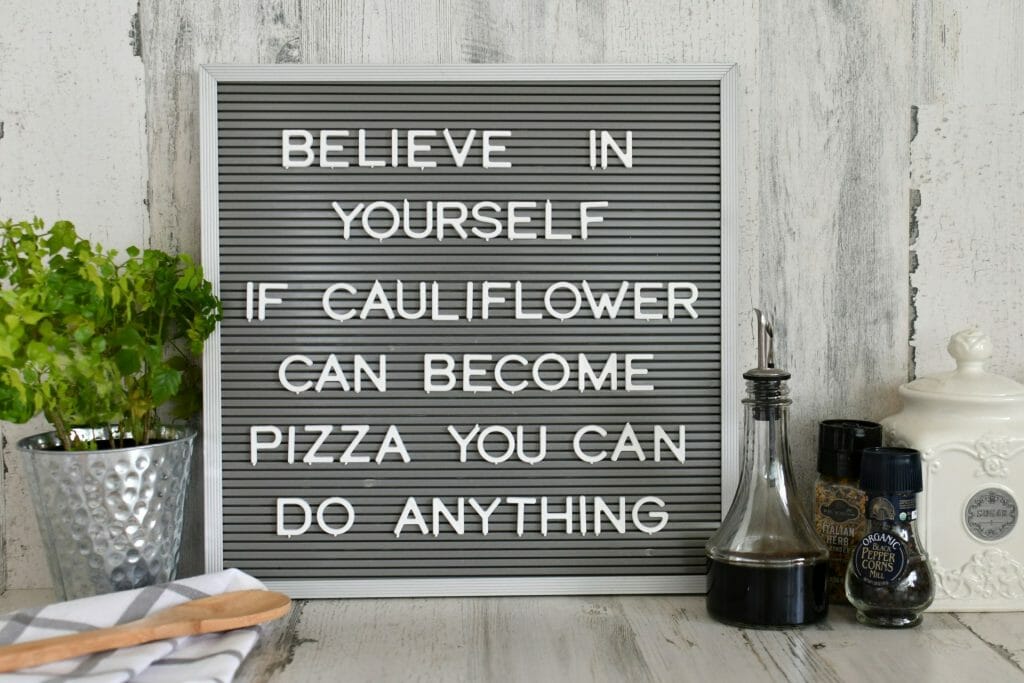
Once you’ve mastered the above formula (which realistically will probably take no more than twenty minutes) you can just rinse and repeat. That is, you can use the same exact formula for ALL of your emails going forward, again and again, forever and ever. All you have to do is change the call to action, then alter the rest a little bit to lead into the CTA.
Why do I need more welcome emails? Why isn’t one enough?
You may have noticed that the first email is pretty short. We did that on purpose so the reader would focus on one single call to action. But of course there is much more you will want to tell the reader! Such as all about your backlist and other details. Additional emails are needed for each of those topics.
How many emails will I need exactly?
Like we said before, that’s entirely up to YOU. More emails means more work in the beginning to set them up, BUT the trade off is you can go longer without needing to interrupt your writing time. This set-it-and-forget-it option is great for authors who only release 1 or 2 books a year. It means less time scrambling to put last minute newsletters together as you can automate an entire month worth of emails or more if you want to.
Rapid-release authors, authors who are used to vigorous marketing, and new authors who are engaging fans in real-time as they write the book may not want as long a sequence. They may prefer to write the bulk of their newsletters week after week as they add new books and content quickly, so their newsworthy announcements change more rapidly.
Where YOU and YOUR books fall on the spectrum will depend on YOUR needs and career goals. So take a moment to map out what those goals are and make a plan.
In the meantime, here are some great common topics and call to actions to get you started:
Email #2: More About Me
Pull out that professional author bio (or better yet, keep it casual) and talk a little more about yourself and your publishing journey.
Call to action: Follow Me On Social Media!
Email #3: Introduce Your First Book (Or Series)
What inspired this book and its characters? What does it mean to you personally?
Call to action: Buy the book.
Email #4, 5, 6, etc: Introduce Book 2, 3, 4, etc.
Call to action: Buy the book (OR Add the book to your TBR on Goodreads)
Email #7: Ask For A Review
Explain why reviews are so important to authors and walk them through the steps of reviewing your book on Amazon (a lot of readers don’t know how).
Call to action: Review the book
Email #8: Join My ARC Team.
This could also be “join my Patreon page” or “join my Discord server” or “join my Fan Club” etc.
Tip: Explain what an ARC Team is. A lot of readers don’t know how it works.
Call to action: Sign up
REMEMBER: These emails are AUTOMATIC and will continue to go out to all your new subscribers until you shut them off. Therefore, all your links and content should be STATIC. This is not the place for time-sensitive information. So keep all sale prices, discounts, new releases, upcoming promotions, etc. for your regular one-off newsletters.
HOT TIP: When crafting the FINAL introductory email in the welcome sequence, it’s a good idea to let the reader know that they’ve finished the sequence and will now be receiving your regular non-automated emails. This can be as simple as thanking them for sticking around as long as they did and letting them know what to expect from future emails.
Engaging Your Subscribers Part 5: Putting It All Together

Okay, that’s a LOT of information packed into one article. But you may be wondering, how do you set all that up in your email service? How do you set up these automated newsletters so that they deliver when they’re supposed to?
This part will vary depending on who your email list service provider is. For example, MailChimp, Mailerlite, and Awber all handle the technical setting up of an automation sequence a little differently. When it comes down to it, you’ll have to spend some time familiarizing yourself with how to set these up with your specific service (Check their ‘Help’ tab).
In general, though, it looks a little this…
First, choose which subscribers go with that specific sequence of emails. For this example, we want this sequence of emails to go specifically to every subscriber who came through the Mega Fantasy Giveaway we mentioned at the beginning of this article. To do this, you will need to create a way to segment or tag each subscriber upon importing them to your list. Check your service provider for how to do this step.
Once you have the correct segment of subscribers connected to the correct automation sequence, you would then select when to deliver the first email. We recommend setting Email #1 (aka the first Welcome email) to deliver the same day the subscriber is added to your list.
Next, you must set how long to wait before delivering Email #2, 3, 4, and so on. In most cases, you can choose to wait X number of days, weeks, or months. So for example, if you want your automated emails to deliver once a week (our recommended time frame) you would set Email #2 to deliver 7 days after Email #1. You’d then set Email #3 to deliver 7 days after Email #2 (or 14 days after Email #1) and so on.
Once you’ve published the sequence, you’re ready to import your subscribers! Then just sit back, relax, and let the magic work for you. Remember, you can always pause and edit your automation sequence at any time.
Now pat yourself on the back, you did it!
Remember, it’s always ONLY the first time that’s scary and takes the longest. Now that you’ve gone through the entire process of setting up an automation sequence, the second time will be a breeze! And the best part? You’ll never again have to stress over what to say to new subscribers! This system will do it all for you, behind the scenes, while you focus on writing! All you have to do now is keep it going! Keep building your email list. Keep funneling new subscribers into those automation sequences, and watch the sales roll in. Watch your socials grow. Enjoy more reviews. And anything else you want! You got the secret formula to do it all!
That’s not all! Get done-for-you social media engagement too! Learn how to turn your social media followers into superfans and increase sales with our next post Social Media Marketing Strategy: Turn Followers Into Superfans FAST!
Use Your Email List To Boost Your Prelaunch!
Learn How With The 9 Step New Release Formula
YOUR NEXT STEP:
Doing This ONE THING Can Save Years Of Struggle & Speed You Towards Success >>
